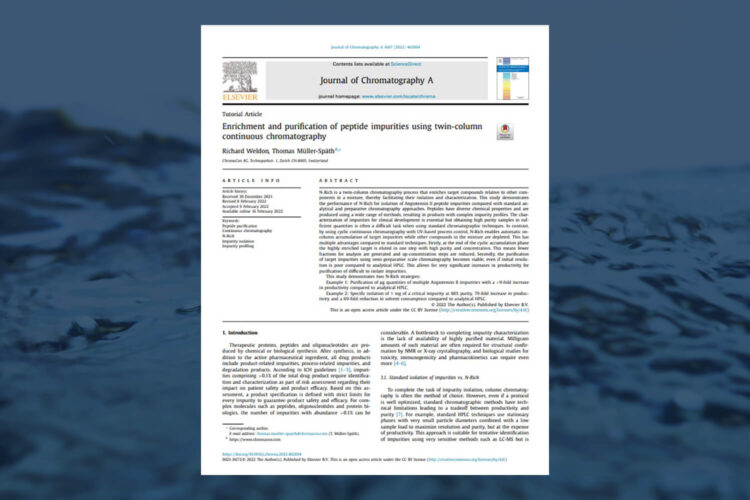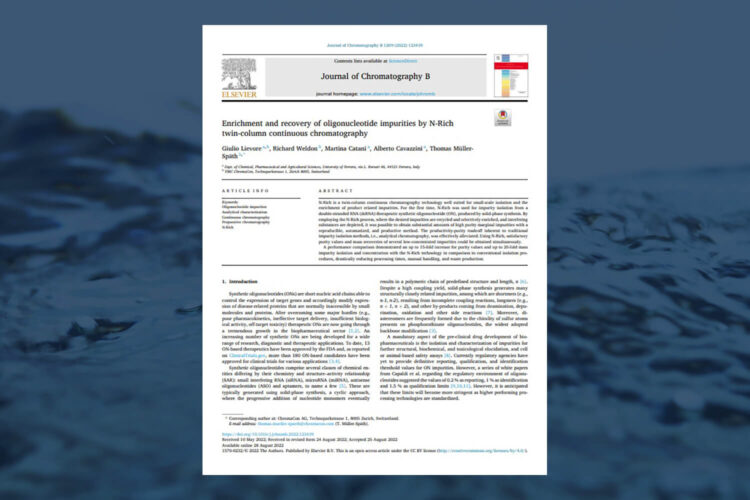N-Rich® Technology Resources
The N-Rich Process Principle Explained
The N-Rich technique is a twin-column cyclical enrichment process whereby a target molecule or chromatographic region is selectively enriched while the undesired products are simultaneously depleted. The technology can be run on the Contichrom® CUBE to automate the process of impurity enrichment and purification.
This short video illustrates the N-Rich process in three main stages: accumulation, depletion, and fractionated elution.
Common Uses for the N-Rich Technique
- Isolation of product-related impurities for active pharmaceutical ingredients
- Characterization of antibody-drug conjugate isoforms
- Purification of ultra-pure compounds as reference materials
- Isolation of impurities after stability and formulation studies
- Identification of biomarkers and compounds in proteomics and metabolomics research
- Biosimilar CMC characterization
Scroll down for journal articles featuring N-Rich technology or contact us for more information!
Additional Resources

Enrichment and purification of peptide impurities using twin-column continuous chromatography
This study demonstrates the performance of the N-Rich process for isolation of Angiotensin II peptide impurities compared with standard analytical and preparative chromatography approaches.

Enrichment and recovery of oligonucleotide impurities by N-Rich twin-column continuous chromatography
In this study, the N-Rich process was used for impurity isolation from a double-stranded RNA (dsRNA) therapeutic synthetic oligonucleotide (ON) produced by solid-phase synthesis.
Columns, Guards and Accessories are only available for purchase online in North America or through our distributors.
To purchase consumables outside North America, please find your local distributor.
For YMC systems’ sales outside of North America and Europe, find your regional office contact information here.
